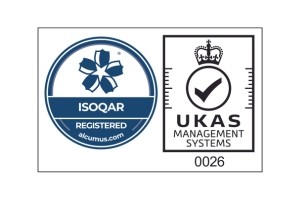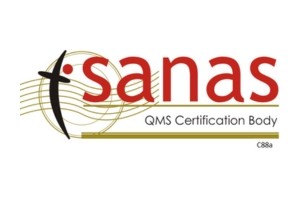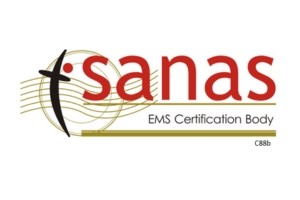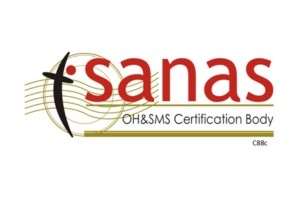There are six (6) implementable clauses within ISO 45001:2018
Occupational Health and Safety Management Standard.
ISO 14001:2015 Environmental Management Systems – requirements with guidance for use
There are a number of reasons why an organisation chooses to implement an environmental management system. These reasons include:
- To demonstrate management commitment;
- Responding to pressure from interested parties (stakeholders);
- Acting in a socially responsible manner;
- Reducing the risk of prosecution;
- To meet regulatory requirements including permits.
This series of blogs aims to assist you to understand the requirements of ISO 14001:2015.

7 Support
ISO 14001:2015 Clause 7 Support is all about the execution of the plans and processes that enable an organization to meet their EMS. Simply expressed, this is a very powerful requirement covering all EMS resource needs. Organizations will need to determine the necessary competence of people doing work that, under its control, affects its environmental performance, its ability to fulfill its compliance obligations and ensure they receive the appropriate training. In addition, organizations need to ensure that all people doing work under the organization’s control are aware of the environmental policy, how their work may impact this and implications of not conforming with the EMS. Finally, there are the requirements for ‘documented information’ which relate to the creation, updating and control of specific data.

7.1 Resources
The organization should provide the resources needed for the establishment, implementation, maintenance and continual improvement of the environmental management system.
Clause 7.1 requires that organization “provide resources need for the establishment, implementation, maintenance and continual improvement of the environmental management system..” The term “resource” is most often used to imply human or financial resources, but there are many types of resources.
Resources can also include equipment, materials, specialized skills, and facilities. Resources in this clause means all of the human, financial, and material resources necessary to implement your EMS. Ensuring adequate resources for your EMS involves three general steps:
- identifying resource needs;
- preparing a budget that addresses the needs; and
- tracking EMS costs on an ongoing basis to ensure that resources continue to reflect current needs.
As a first step in ensuring that appropriate resources are available for the EMS, top management must be made aware of, and understand. the resource needs of the organization. To identify EMS resource requirements, you will need to assess the level of effort your facility’s current environmental tasks require, as well as the effect of corporate plans, forecasts, new product development plans, production plans, and capital expenditure plans.
It is important to consider business forecasting and new development plans when evaluating required resources because they can have a significant impact on environmental issues.
Once the required resources have been identified. you should then develop a budget based on the current level of required resources. Most companies formulate resource budgets covering a one- to five- year period.
Clause 7.1 does not require any type of resource forecasting or documenting. The clause simply requires that resources be provided, and you are free to address this in whatever way best suits your particular situation. Using the cost code approach would facilitate record keeping because the accounting records generated would in effect “‘document“ the resource requirements of the EMS. Without such documentation, it will be difficult to demonstrate to a certification auditor that your facility has allocated adequate resources to implement the EMS.

7.2 Competence
The organization must determine the necessary competence of persons doing work under its control that affects its environmental performance and its ability to fulfill its compliance obligations. The organization must ensure that these persons are competent on the basis of appropriate education, training and experience. They must determine training needs associated with its environmental aspects and its environmental or management system and where applicable, take actions to acquire the necessary competence, and evaluate the effectiveness of the actions taken. The organization must retain appropriate documented information as evidence of competence. Applicable actions can include the provision of training to, the mentoring of employees, reassignment of currently employed persons or the hiring or contracting of competent persons.
Clause 7.2 requires that “ . . . persons are competent on the basis of appropriate education, training and/or experience.” Your overall goal is to produce knowledgeable, skilled, and aware employees who assist your facility in achieving its stated goals and objectives. You have the responsibility as part of your EMS, to develop an approach to judge the competence of employees to accomplish their assigned tasks.
This can be achieved through establishing minimum levels of education and experience for specific positions or tasks and/or through competency testing after training or other methods such as mentoring, reassigning of employees to ensure employee knowledge.
This Clause requires the organization to:
- identify the knowledge and skills necessary to achieve environmental objectives (i.e., training needs analysis);
- implement training to provide the appropriate knowledge and skills;
- and ensure that employees doing work that may have a significant impact on the environment are competent.
There are two excellent reasons for training employees about environmental management and your EMS:
- Every employee can have an impact on the environment.
- Any employee can have good ideas about how to improve environmental management efforts.
Although it is not specifically stated as a requirement, it also addresses regulatory-required and regulatory-derived training. Organizations conforming to ISO 14001 have committed to complying with applicable Compliance obligation which includes environmental laws and regulations, and this commitment includes implementing any training required by the regulations or required to implement the procedures necessary to achieve compliance.

7.3 Awareness
The organization must ensure that persons doing work under the organization’s control are aware of the environmental policy, the significant environmental aspects and related actual or potential environmental impacts associated with their work. They must be aware of their contribution to the effectiveness of the environmental management system, including the benefits of enhanced environmental performance and the implications of not conforming with the environmental management system requirements including not fulfilling the organization’s compliance obligations.
The intent of Clause 7.3 is to ensure that employees at all levels of the organization understand the Policy and principles of the EMS and the ways in which their job activities impact the environment and the achievement of EMS goals which obviously includes meeting compliance obligations. All personnel within the organization should have at least a basic understanding of the environmental issues associated with the organization’s operations, while personnel whose work may directly affect environmental performance should be trained and competent to complete their assigned tasks.
Employees can only assist the organization in achieving its environmental objectives and improving environmental performance if there is adequate awareness and they possess the appropriate knowledge and skills. This leads to one of the central themes of IS0 14001: by informing employees of the impact that each facility operation has on the environment and their roles in the successful management of those impacts, improved environmental performance is inevitable.
Everyone in your organization must have a very basic awareness of the EMS. Therefore, all personnel at your facility should receive EMS awareness training. EMS awareness training includes basic training that addresses an organization’s EMS focusing on the environmental policy, the importance of conforming with EMS requirements, and general roles, responsibilities, and authorities within the EMS.
EMS awareness training is typically provided when the organization initially introduces its EMS and periodically thereafter. All new employees should be given EMS awareness training as part of their introduction into the organization. Because EMS awareness training involves all employees, it will likely involve the greatest number of people within an organization.
Join our mailing list to receive upcoming posts: http://www.isoqar.co.za/





